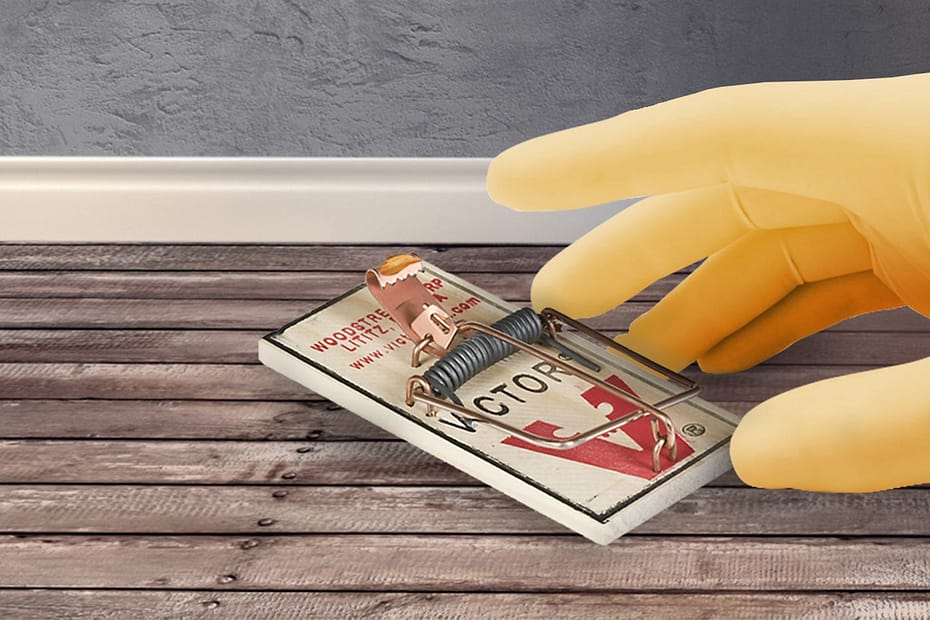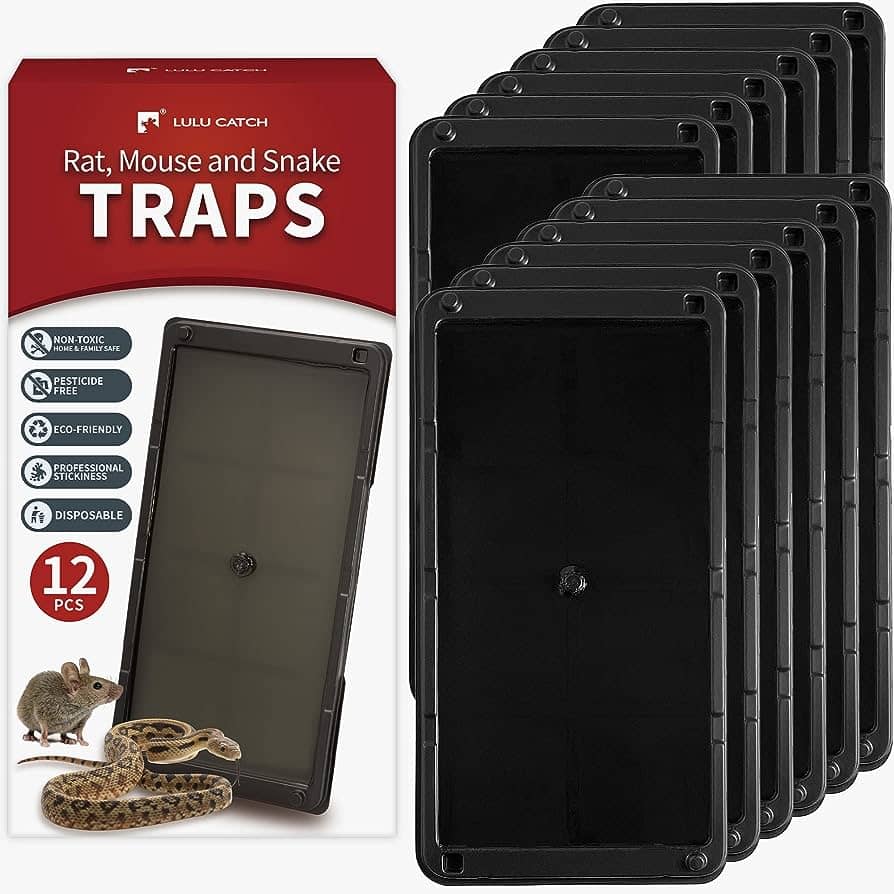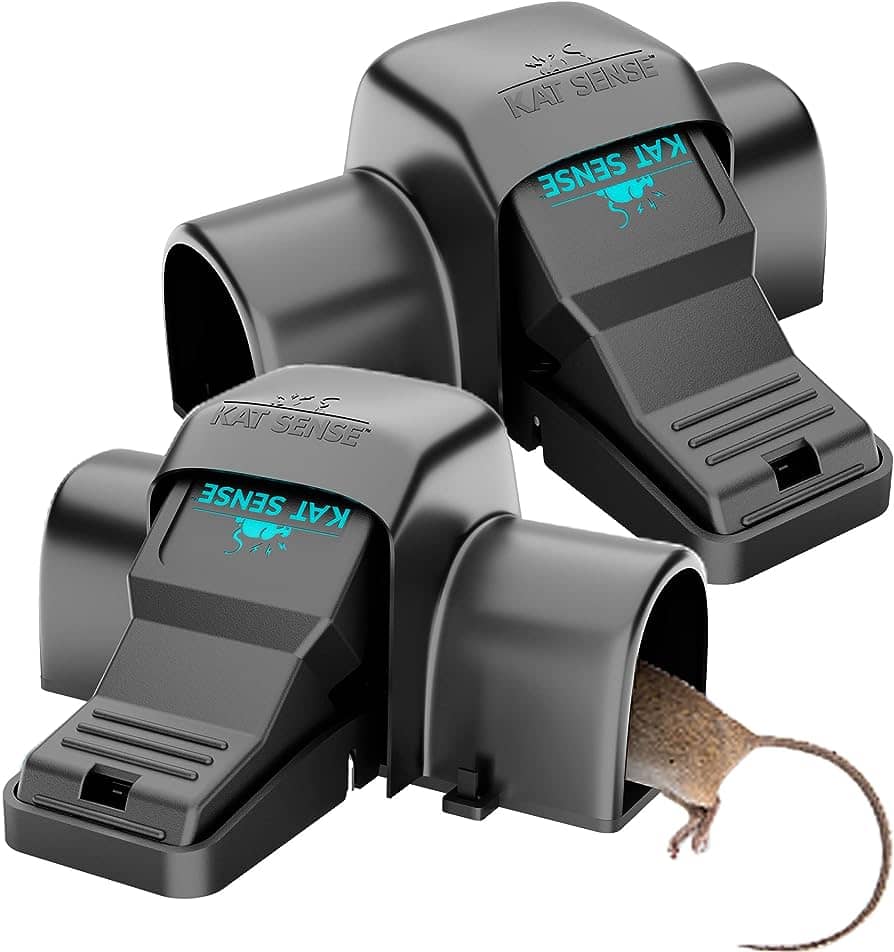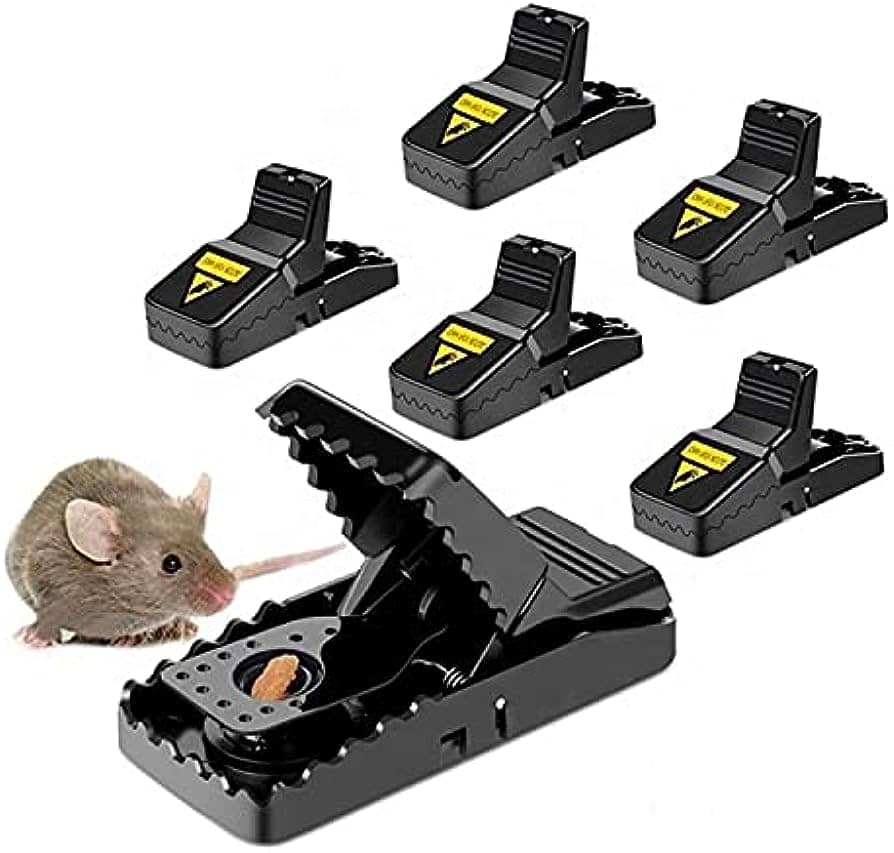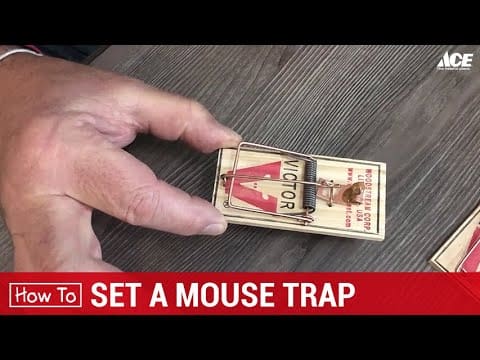To avoid common mistakes in mouse trapping, be sure to avoid these errors.

Credit: geniepestcontrol.com
Choosing The Wrong Type Of Trap
Choosing the wrong type of mouse trap can be a common mistake when trying to catch these pesky creatures. It’s important to do your research and select a trap that is suitable for your specific situation to increase your chances of success.
Common Mouse Trapping Mistakes To Avoid
When it comes to getting rid of mice, choosing the wrong type of trap can be a major setback. Not all traps are effective for all situations. Understanding the different types of traps available is essential for successful mouse trapping.
Below are some common mouse trapping mistakes to avoid when it comes to choosing the right trap:
Not All Traps Are Effective For All Situations:
- Snap traps: Designed to kill mice instantly, these traps are the most common and widely used. They consist of a wooden base with a metal bar that snaps shut when triggered. Snap traps are highly effective but require caution when setting them due to the potential for injury.
- Glue traps: These sticky traps are designed to immobilize mice upon contact. While they may seem humane, they can cause unnecessary suffering for the trapped animal. Additionally, larger mice may be able to escape from glue traps.
- Live traps: These traps allow you to catch mice alive for release elsewhere. They are a humane option for those who wish to avoid killing the rodents. However, live traps require careful handling to prevent direct contact with the captured mice.
- Electronic traps: Using batteries or electricity, these traps deliver a lethal shock to mice when they enter. They are a popular choice for those who prefer a more hands-off approach. However, electronic traps can be more expensive and may require additional maintenance.
- Multiple-catch traps: Also known as repeating or multi-catch traps, these are designed to catch multiple mice without the need to reset the trap each time. They are suitable for infestations or areas with high mouse activity. However, emptying and resetting the trap can be time-consuming.
Choosing the right type of trap depends on your preference, the severity of the infestation, and your desired level of involvement. It’s important to consider both effectiveness and humaneness when making your selection. By avoiding the common mistake of choosing the wrong trap, you can increase your chances of successfully eliminating mice from your surroundings.
Placing Traps Incorrectly
Incorrectly placing traps can make your mouse trapping efforts ineffective. Avoid common mistakes and ensure proper trap placement for successful rodent control.
Identifying High-Traffic Areas For Mice
Mice are ingenious creatures that can squeeze through even the tiniest of gaps in search of food and shelter. To effectively trap them, it’s essential to identify their high-traffic areas within your home. Here’s how you can go about it:
- Look for signs: Keep an eye out for droppings, gnawed objects, and grease marks along walls, as these are indicators of mouse activity.
- Check the kitchen: Mice are attracted to food sources, so inspect your pantry for any spilled food or unsealed packaging.
- Examine secluded spots: Mice prefer hiding in dark and secluded areas such as attics, basements, and storage rooms. Pay close attention to these spaces during your search.
Avoiding Common Mistakes In Trap Placement
Now that you’ve located the mouse hotspots in your home, it’s time to set the traps. However, placing them incorrectly can render them ineffective. Avoid these common mistakes to ensure successful trapping:
- Insufficient traps: Placing just one or two traps might not be enough. It is essential to set multiple traps to cover a wider area.
- Incorrect trap type: Different situations call for different types of traps. Snap traps are suitable for large infestations, while glue traps are effective in capturing individual mice.
- Inadequate bait placement: Mice are wary creatures, and if the bait is not positioned correctly, they might snatch it without triggering the trap. Make sure to place the bait at the center of the trap’s sensitive trigger mechanism.
- Improper trap placement: Where you position your traps plays a crucial role in their effectiveness. Avoid these errors:
- Placing traps randomly: Traps should be strategically placed along walls, as mice tend to run close to them.
- Obstructing traps: Place the traps in areas where mice are likely to encounter them, without any barriers in their path.
- Leaving out high-traffic areas: Neglecting to set traps in areas where mice are most active can significantly reduce your chances of trapping them efficiently.
By avoiding these common mouse trapping mistakes, you’ll increase your chances of successfully eliminating these unwanted guests from your home. Remember to be patient and persistent in your efforts. Good luck!
Neglecting To Seal Entry Points
Neglecting to seal entry points is a common mouse trapping mistake that should be avoided. By sealing off any potential openings in your home, you can prevent mice from entering and reduce the need for trapping altogether.
The Importance Of Sealing Entry Points
Neglecting to properly seal entry points is one of the most common mistakes people make when trapping mice. These small rodents are extremely adept at finding tiny openings in your home and squeezing their way in. Failing to seal these entry points effectively can render your attempts to trap mice futile.
Here’s why sealing entry points is crucial in your mouse trapping endeavors:
- Prevents re-infestation: By sealing off entry points, you ensure that mice cannot enter your home again once you have successfully trapped and removed them.
- Eliminates hiding spots: When you seal off entry points, you also eliminate potential hiding spots for mice. This makes it easier to locate and trap them effectively.
- Reduces property damage: Mice can cause extensive damage to your property by chewing through wires, insulation, and even structural components. Sealing entry points minimizes the chances of such damage occurring.
- Enhances overall home security: Sealing entry points not only keeps mice out but also prevents other pests from finding their way in. This helps to create a more secure and comfortable environment for you and your family.
How To Properly Inspect And Seal Potential Entry Points
Inspecting and sealing potential entry points is a fundamental step in mouse trapping. Follow these guidelines to ensure that you seal off all the vulnerable areas where mice might attempt to enter your home:
- Perform a thorough inspection: Examine the exterior of your home, paying close attention to areas where utilities enter, damaged screens, gaps around doors and windows, and cracks in the foundation. Look for any signs of gnaw marks or visible holes that indicate potential entry points.
- Seal cracks and gaps with caulk: Use a high-quality caulk suitable for the material you are sealing, such as silicone caulk for areas exposed to moisture. Fill in any cracks or gaps you find, making sure to create a tight seal. Remember to check both the interior and exterior of your home for potential entry points.
- Install door sweeps: Attach door sweeps to the bottom of exterior doors to eliminate gaps that mice can squeeze through. Choose weather-resistant sweeps that provide a proper seal to prevent both mice and drafts from entering.
- Replace damaged screens: If you have damaged window screens, repair or replace them as soon as possible. Even small tears or holes can serve as entry points for mice.
- Secure utility openings: Seal gaps around utility lines, pipes, and vents using steel wool or wire mesh. Mice are unable to chew through these materials, making them effective deterrents.
- Consider expert assistance: If you’re unsure about identifying and sealing potential entry points, it’s wise to seek professional help. Pest control experts have the knowledge and experience to thoroughly inspect your home and ensure all vulnerable areas are properly sealed.
Remember, neglecting to seal entry points can drastically reduce the effectiveness of your mouse trapping efforts. By following these guidelines and taking the necessary steps to seal off potential entry points, you’ll significantly increase your chances of successfully trapping and removing mice from your home.
Using Ineffective Or Baitless Traps
Using ineffective or baitless traps is a common mouse trapping mistake to avoid. Ensure you select traps that are effective and baited properly to increase your chances of successfully catching mice.
The Importance Of Using Traps With Bait
- It is essential to use traps with bait when trying to catch mice. This is because mice are naturally curious creatures and are attracted to food sources. By using bait in your traps, you increase the chances of luring mice towards the trap, making it more effective in catching them.
- Bait serves as an enticement for mice to approach the trap, overcoming any initial skepticism or caution they might have. Without bait, the trap may go unnoticed by the mice or be perceived as a potential threat, causing them to avoid it altogether.
- The scent of the bait can act as a powerful attractant, drawing mice towards the trap from a distance. It is recommended to use strong-smelling food items that mice find irresistible, such as peanut butter, chocolate, or even bacon.
- Using traps with bait not only increases the likelihood of catching mice but also allows for more efficient trapping. When mice are enticed by the bait, they are more likely to trigger the trap mechanism, leading to a quicker and more successful capture.
- Remember to regularly check and refresh the bait in the trap to ensure its effectiveness. Over time, the scent may fade or the bait may spoil, making it less appealing to mice. Regular maintenance of the traps and bait is crucial in maintaining an effective trapping strategy.
- Using traps with bait is an integral part of any successful mouse trapping endeavor. By understanding the importance of bait in attracting mice and choosing appropriate bait options, you can significantly improve your chances of successfully trapping mice.
Common Mistakes When Selecting Bait
- Choosing the wrong type of bait can significantly impact the success of your trap. Avoid these common mistakes when selecting bait for mouse traps:
- Using bland or unappealing food items: Mice are attracted to strong-smelling and high-calorie foods. Avoid using bland or unappealing food items as bait, as they may not entice the mice to approach the trap.
- Ignoring mice preferences: Mice have preferences when it comes to food. Certain food items, such as peanut butter or chocolate, are generally more appealing to them. Make sure to select bait options that align with mice preferences to maximize the effectiveness of your traps.
- Using too much bait: While it may be tempting to overload the trap with bait, this can backfire. Mice can easily snatch the bait without triggering the trap, rendering it ineffective. Use a small amount of bait, ensuring that it is securely placed on the trap mechanism.
- Using bait that can easily be removed: Avoid using loose bait that can be easily carried away by mice. Secure the bait firmly to the trap, making it more challenging for the mice to steal it without triggering the trap.
- Neglecting to vary bait options: Mice can become cautious or suspicious of the same bait over time. To maintain the effectiveness of your traps, periodically rotate and vary the bait options you use.
By avoiding these common mistakes and selecting appropriate bait for your mouse traps, you can improve the chances of successfully catching mice. Remember to regularly monitor and adjust your trapping strategy based on the effectiveness of the bait and traps.
Failure To Properly Maintain Traps
Proper maintenance of traps is crucial to effectively catch mice and avoid common trapping mistakes. Failing to do so can result in the traps becoming ineffective and allowing mice to continue causing problems.
Trapping mice can be an effective solution to keep them from infesting your home. However, it’s crucial to remember that proper maintenance of the traps is just as important as setting them up. Failure to maintain your traps can result in reduced effectiveness and even render them useless.
In this section, we will discuss two essential aspects of trap maintenance: regularly checking and resetting traps, and cleaning traps for optimal effectiveness.
Regularly Checking And Resetting Traps:
Keeping a close eye on your mouse traps is imperative to ensure they continue to work efficiently. Mice are intelligent creatures and can quickly learn to avoid traps that have been triggered or those that have not yielded any results.
Here’s how you can effectively maintain your traps by regularly checking and resetting them:
- Inspect the traps daily: Make it a habit to inspect the traps every day to check if they have caught any mice. This way, you can remove any captured mice promptly and reset the traps if needed.
- Reset triggered traps: If a trap has been triggered but hasn’t captured a mouse, reset it immediately. Adjust the trigger mechanism and ensure the trap is properly baited. This will increase the chances of successfully catching a mouse.
- Reposition traps: Mice can become cautious if they consistently see traps in the same locations. To prevent this, move the traps around periodically. Place them along walls, in dark corners, or near areas where mice have been active to increase the chances of trapping them.
Cleaning Traps For Optimal Effectiveness:
Traps that are dirty or contaminated can significantly diminish their effectiveness. Mice have a keen sense of smell, and any foreign odors on the trap can deter them from approaching it. To maintain the highest level of effectiveness, follow these guidelines for cleaning your traps:
- Wear gloves: Before handling the traps, always put on gloves to prevent the transfer of your own scent, which might make mice wary of the trap.
- Use unscented cleaning agents: Avoid using cleaning agents with strong scents, as they can repel mice. Opt for unscented dish soap or a mild disinfectant to clean the traps.
- Scrub the traps thoroughly: Carefully scrub the traps with a brush or sponge to remove any debris, blood, or residue. Pay extra attention to remove any lingering scent that might deter mice from approaching the trap.
- Rinse and dry the traps: After scrubbing, rinse the traps thoroughly to remove any cleaning residue. Make sure to dry them completely before reusing them or storing them away.
By regularly checking and resetting traps and keeping them clean, you can significantly increase the chances of successfully trapping mice. Proper maintenance ensures that the traps remain effective and continue to serve their purpose in your efforts to rid your home of these unwanted guests.
Remember, trapping alone might not be sufficient for complete mouse control. It is crucial to identify and seal potential entry points, eliminate attractants, and employ additional preventive measures to ensure long-term success in managing mouse infestations.
Ignoring Professional Help
Don’t make the common mistake of ignoring professional help when it comes to mouse trapping. Remember to seek expert assistance for effective solutions.
Common Mouse Trapping Mistakes To Avoid:
***
Addressing a mouse infestation can be a frustrating and time-consuming task. While there are several DIY methods available for trapping mice, it’s important to recognize when it’s time to call in the professionals. Here, we’ll explore the benefits of expert assistance in mouse trapping and why disregarding professional help can lead to additional complications.
Knowing When To Call A Professional Pest Control Service:
- Persistent infestation: If you’ve tried various trapping techniques but the mice keep coming back, it’s crucial to seek the help of professional pest control services. They have the knowledge and experience to identify the root cause of the infestation and implement effective measures to eliminate it once and for all.
- Health risks: Mice can carry a range of diseases and parasites, posing a significant risk to your health and the well-being of your family. Professional pest control services are equipped with the necessary tools and expertise to handle these hazardous situations safely and effectively.
- Risk of property damage: Mice are notorious for causing damage to various parts of your property, including electrical wiring, insulation, and furniture. If you notice signs of structural damage or suspect that mice are causing harm, it’s essential to consult professionals who can assess the situation and provide the appropriate solution.
- Time and effort: DIY mouse trapping methods can be time-consuming and often require persistent monitoring. Hiring professionals allows you to save valuable time and effort while ensuring that the infestation is dealt with efficiently.
The Benefits Of Expert Assistance In Mouse Trapping:
- Specialized knowledge: Pest control professionals have extensive knowledge about mouse behavior and habits. They can accurately identify entry points, nesting sites, and food sources to develop a targeted and effective trapping strategy.
- Effective tools and techniques: Professional pest control services utilize advanced tools, traps, and techniques that are not always available to the general public. They have access to a wide range of mouse trapping methods and can choose the most appropriate one for your specific situation.
- Prevention and long-term solutions: In addition to trapping mice, professionals can provide advice on preventive measures to avoid future infestations. They can help seal entry points, recommend sanitation practices, and offer guidance on eliminating attractants, ensuring long-term success in mouse control.
- Guaranteed results: By enlisting the help of professionals, you can have peace of mind knowing that the mouse trapping process will be handled efficiently and effectively. Many pest control services offer guarantees or warranties, providing reassurance that the infestation will be completely eradicated.
Remember, ignoring professional help when it comes to mouse trapping can result in prolonged infestations, health risks, and extensive property damage. By knowing when to call a professional pest control service, you can benefit from their expertise, specialized tools, and long-term solutions for effective mouse control.
Don’t hesitate to seek professional assistance when DIY methods fall short in dealing with these pesky rodents.
Frequently Asked Questions For Common Mouse Trapping Mistakes To Avoid
What Is The Best Strategy For Mouse Traps?
The best strategy for mouse traps is to place them in areas where mice are likely to roam and to use bait that appeals to them.
What Makes Mice Avoid Traps?
Mice avoid traps due to their insightful nature and ability to detect danger.
When Mice Avoid Traps?
Mice avoid traps if they have encountered a similar trap before or if they sense danger.
When Mice Are Too Smart For Traps?
When mice are too smart for traps, consider using alternative methods or seeking professional help.
Conclusion
To effectively trap mice, it is important to be aware of the common mistakes that many people make. By avoiding these errors, you can improve your chances of successfully eliminating these unwanted pests from your home. One common mistake is using inadequate traps that are not designed to effectively catch mice.
It is crucial to choose the right type of trap that is specifically designed for mice. Another mistake to avoid is placing the traps in the wrong locations. Mice are usually found in areas such as basements, attics, and kitchens, so focus on these areas when setting up your traps.
Additionally, do not forget to place baits or attractants to lure mice into the traps. Furthermore, it is important to regularly check the traps and dispose of any captured mice promptly. By following these guidelines and avoiding common trapping mistakes, you can successfully eliminate mice from your home.
